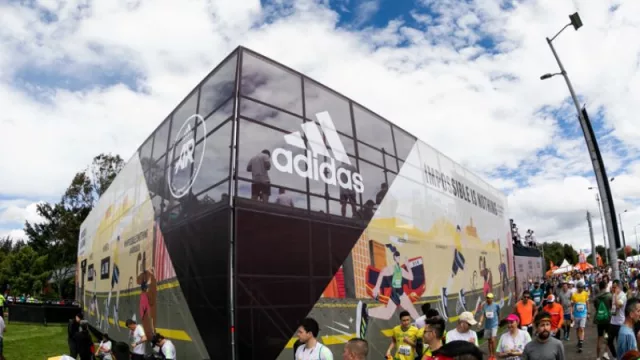Returning to Sustainable Roots in Brand Strategy, Planning, and Activation:
-
While many "gurus" have trivialized the concept of brand culture, reducing it to attractive but empty rhetoric, it’s crucial to distinguish between the superficial and the authentic. There are professionals who understand its true value, while others focus on virality and immediate results
An effective strategy should aim to build a legacy. Philip Kotler asserts that “brands must blend the digital with the physical to create meaningful experiences” (Marketing 4.0: Moving from Traditional to Digital). This balance is fundamental, as culture is neither fully digital nor exclusively traditional; it’s a living, evolving entity that must be integrated coherently and strategically. Every touchpoint, whether physical or digital, reinforces the brand narrative. It’s not about choosing between traditional and digital; it’s about making both channels work in synergy to amplify the message.
It’s true that some people use the term "brand culture" to attract followers or sell courses with unfounded promises. However, we must acknowledge the importance of these concepts. What some "gurus" highlight, even superficially, has a background that, when well understood, can be powerful. The issue lies in the fact that, too often, the execution of these concepts lacks depth or is skewed by commercial interests. Brand culture goes far beyond inspiring phrases or empty trends. A brand with a clear purpose must reflect in every aspect of its communication the “why” that makes it unique, not only through inspiring messages but also through genuine and measurable commitment.
IG: @infonegociosmiami
The evolution of Brand Culture is the integration of branding, crossing marketing, and the phydigital experience of it, being the way of being and doing in every step of the company, along with the expansion of the product-brand into multi-category and multi-form experiences.
Let’s take Adidas as an example with its motto “Impossible is Nothing.” This campaign isn’t just a catchy slogan; it’s a deeply integrated statement of values within the brand’s identity. It doesn’t just inspire overcoming obstacles; it connects with real stories of athletes who have broken barriers.
Adidas isn’t merely looking to sell sportswear; its goal is to convey that its products are tools for people to challenge their own limits. This approach provides depth and a clear purpose that resonates with its audience: empowering consumers to believe in the impossible. Moreover, its message is reflected not only in its advertisements but also in collaborations with iconic athletes and in product innovations designed to enhance performance. Rather than obsessing over the digital, Adidas integrates its message into both digital and physical experiences, using “Impossible is Nothing” as a central pillar for decades. This long-term approach allows the message to evolve alongside market demands, developing an authentic, consistent, and emotionally resonant purpose.
Now to wrap this up: In my experience working with physicians, it helped them understand that their brand is an extension of their identity and that public perception needs to be as robust as that of any multinational corporation. Personal branding isn’t built solely on social media; it’s crafted in every interaction, every post, and every shared word. A physician who appears on television, participates in interviews, or is quoted in articles essentially becomes a growing brand. Every satisfied patient and every positive testimonial reinforces this identity.
11 Major Mistakes the Market Must Drastically Relearn (co-created with Marcelo Maurizio and Maximiliano Rodriguez Otero).
-
Marketing isn't bimodal (that term is so outdated): The real brand experience is lived in a "phydigital" manner, where the physical and digital intertwine seamlessly.
-
Media isn't 360 degrees: The dynamics of the entire company must cross between online and offline, focusing on holistic experiences. This is what we call Crossing Marketing.
-
Experience isn’t just an activation: The essence of a brand must manifest in multiple branded experiences, amplified and expanded across various categories and encounters.
-
Marketing actions need to integrate: Scripted, co-created campaigns with influencers don’t replace collaboration with celebrities and brand partnerships; both strategies must coexist.
-
Small brands must act like big ones: Regardless of size, it’s essential for brands, including personal ones, to implement large-scale strategies from the outset.
-
Restructuring the culture team: Leadership in culture, along with marketing and activation logistics teams, is the primary arm that needs reconfiguration throughout the company.
-
The role of Head of Culture: This position is no longer just multidisciplinary; it should be considered the co-CEO of the company. If you don’t have this structure and role in place, it’s time to implement it.
-
Digital marketing as a strategic discipline: It’s one of the many areas of strategic marketing and must be integrated into a complex and coherent system to achieve excellence.
-
The complexity of marketing: The pursuit of value, the obsession with differentiation, and perceived value have become more complicated than ever. In a hyper-competitive environment, it’s crucial to avoid becoming a commodity.
-
Vital interaction between departments: Collaboration between internal and external marketing, communication, activation, and branding services is essential. It’s not about an "or" but rather a "and"; both structures are fundamental.
-
Effective brand investment: It’s not about spending the bare minimum to boost sales, but about investing what’s necessary in the short, medium, and long term so that consumers choose and buy the brand across a broader spectrum than just a product.
IG: @infonegociosmiami
Culture: A Living, Dynamic System
The culture of a brand should be conceived as a living organism, an entity that grows, adapts, and evolves over time. It’s not merely a set of values printed on paper or a mission repeated in press releases. “A brand is not a logo; it’s a culture that lives and breathes” (Marty Neumeier, in The Brand Gap). This perspective emphasizes what is often overlooked: a brand is not static; it constantly interacts with its environment. Just like a human being, a brand’s culture evolves and must do so in sync with social, technological, and economic changes.
Integrating these values at all levels of the organization ensures that the brand remains consistent and authentic. This means that culture must be reflected not only in external communication but also in internal decision-making, work organization, and customer interactions. Branding is, therefore, a continuous process, a journey that adapts to changes and requires a long-term approach.
See the note here and analysis of The Brand Gap.
Why Do They Confuse Culture with Mission and Vision?
One of the most common mistakes is to associate a brand’s culture with its mission and vision. While these concepts are important, they aren’t sufficient on their own. Mission and vision are static statements, often trapped in corporate reports, while culture is a living entity, expressed through actions, decisions, and, above all, in the experiences provided to consumers. As Kotler says, “a brand must reflect a clear vision and a culture that guides all its decisions,” transforming the brand into something more than just an attractive set of words.
It’s crucial to emphasize that a well-managed brand culture can make the difference between a company that simply sells products and one that establishes lasting relationships with its consumers. This culture must be authentic and present in every aspect of the brand, from customer service to product development processes.
Marketing Trends: Bridging the Traditional with the Digital
Today, marketing can’t be limited to the digital realm. The interaction between the physical and digital is keyto creating meaningful experiences, as Kotler expresses. Brands must find ways to integrate both worlds rather than focusing exclusively on one, which is a common pitfall for smaller companies that often obsess over immediate results. This requires a strategy that values traditional methods and combines them intelligently with digital approaches. Effective marketing is based on creating experiences that can be enjoyed both online and offline, allowing for genuine emotional connections with consumers.
Don’t miss out on reading about the valuable strategy of Native Advertising:
Link to Native Advertising article
The Importance of Being a Leader: High-Impact Marketing
The key to successful marketing lies in each professional’s ability to project themselves as a leader in their specialty. Just as physicians present themselves as authorities in their field, brands must establish a hierarchy based on their expertise and the value they bring to the community. The ability to build a solid reputation, viewed as a symbol of authority, will ensure that both a professional and a brand remain relevant.
Ultimately, a brand reflects a clear, authentic, and well-communicated purpose. We must not let superficiality divert us from what truly matters: building something that is deeply aligned with our identity, our actions, and the way we wish to impact our audience.
-
Infonegocios RED: 4.5 million Anglophone Latinos reading business news daily.
-
Contacts: [email protected] or [email protected]


Tu opinión enriquece este artículo: